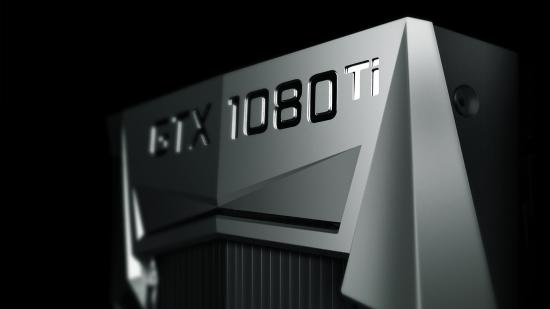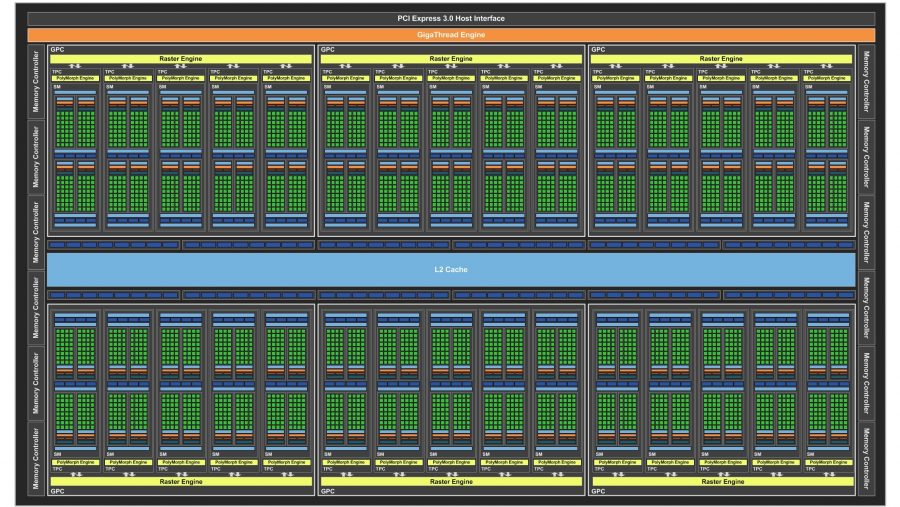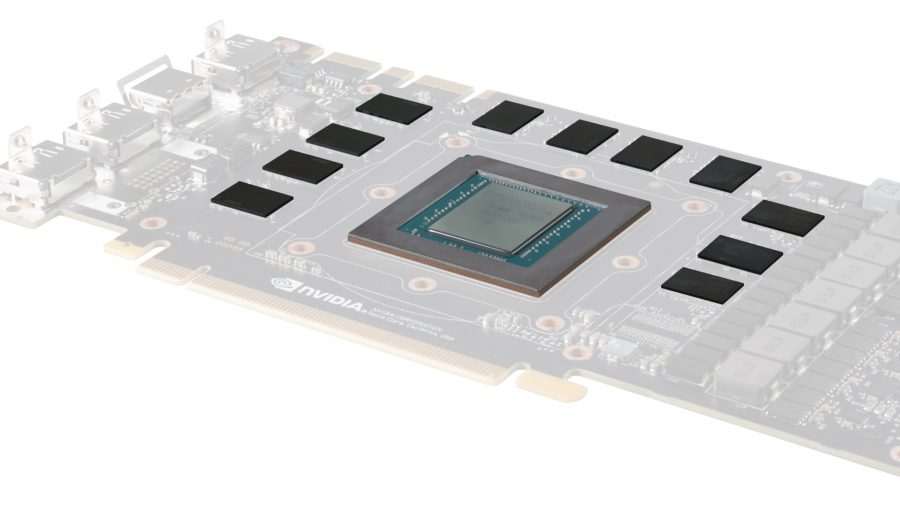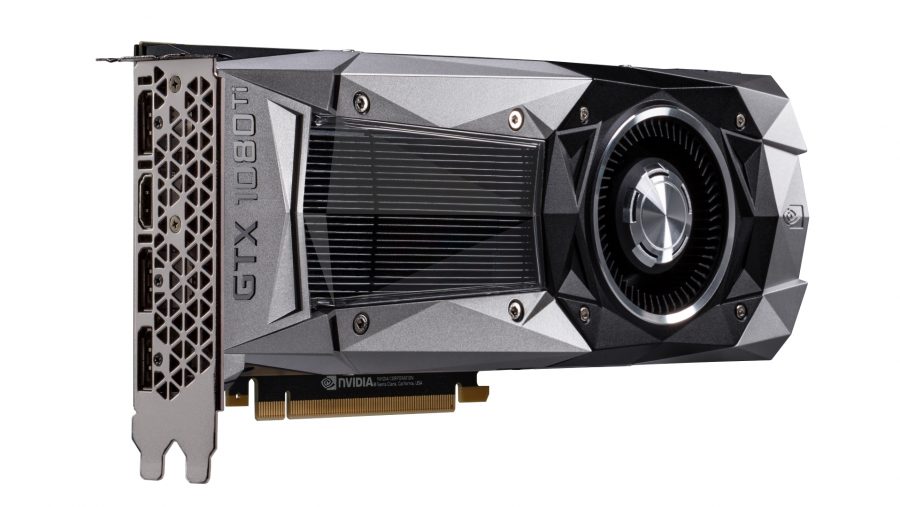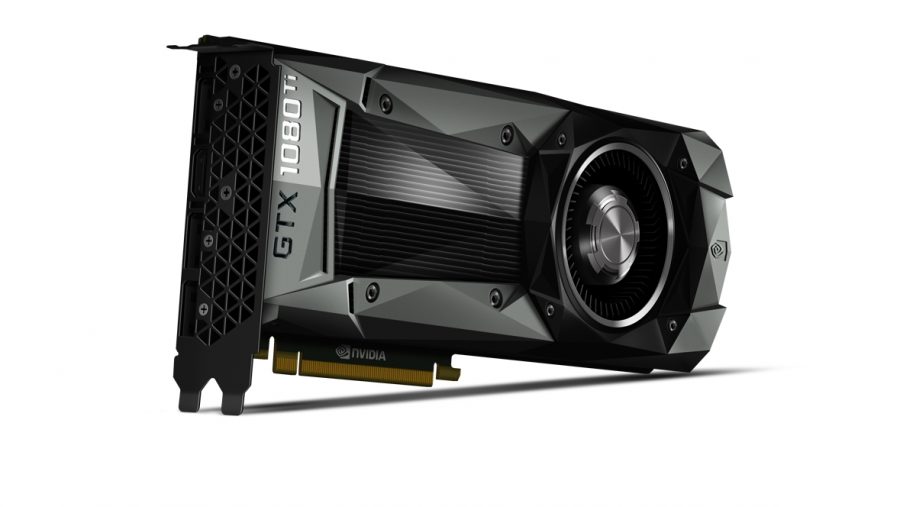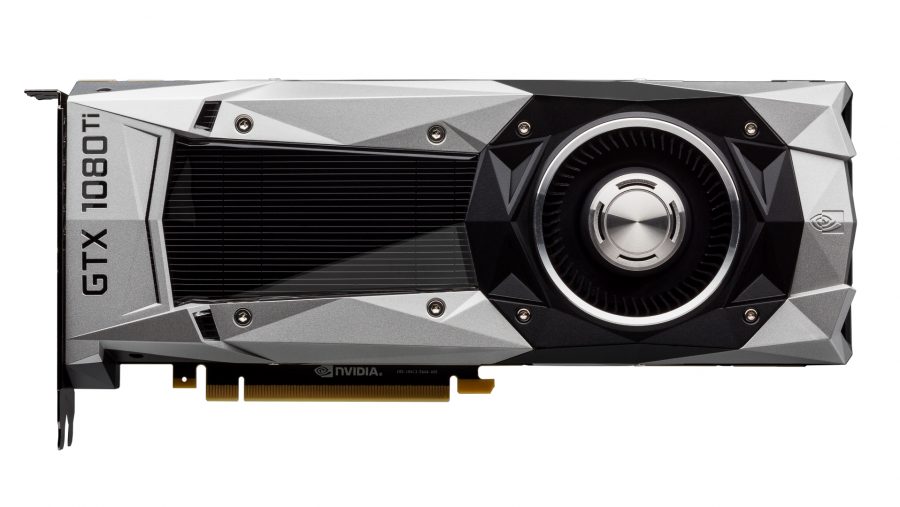Our Verdict
Nothing else save a $1,200 Titan X can come close to the incredible performance of the GTX 1080 Ti. It's still an offensively expensive graphics card, but it's absolutely your best bet for serious 4K gaming performance.
The Nvidia GTX 1080 Ti is the current fastest GeForce GPU, and your best hope for genuine gaming performance as a 4K graphics card. It’s well over a year old now, but it’s still the king. Of course there’s always the ultra expensive Titan cards, but they cost stupid money. Well, all the cards have been stupidly expensive while the cryptocurrency market was breaking our tech-buying hearts… but at least graphics card prices are starting to settle down a little.
But the GTX 1080 Ti is the final piece of the puzzle with regards to the Pascal generation of GeForce GPUs, and fits in the sizable gap between the GTX 1080 and the Titan Xp.
It’s also going to remain the fastest GeForce card on the market until Nvidia gets around to translating the currently compute-based Nvidia Volta architecture down to the desktop level later this year. Exactly when that happens we’re still not sure, but even once the new cards do land around August/September time, the GTX 1080 Ti is still going to remain an outstanding GPU.
It looks like the new mainstream gaming GPUs will be at least unveiled around August 20 this year, as Nvidia’s Hot Chips and pre-Gamescom events will happen that day on either side of the Atlantic. It still hasn’t stated the name or the architecture yet, so they could still be called either GTX 2080 or GTX 1180, but we’re still betting on them essentially running on the Nvidia Volta tech.
Though maybe the new cards will come rocking a newly-minted Nvidia Turing architecture, or maybe Nvidia Ampere… Right now there is more speculation over the naming of the next-gen GeForce cards than there is any hard fact.
Or soft fact. Right now, I’d take soft fact.
Whatever, the powerful, efficient Pascal architecture has had a good run though, and the GTX 1080 Ti is absolutely the best of the gaming lot.
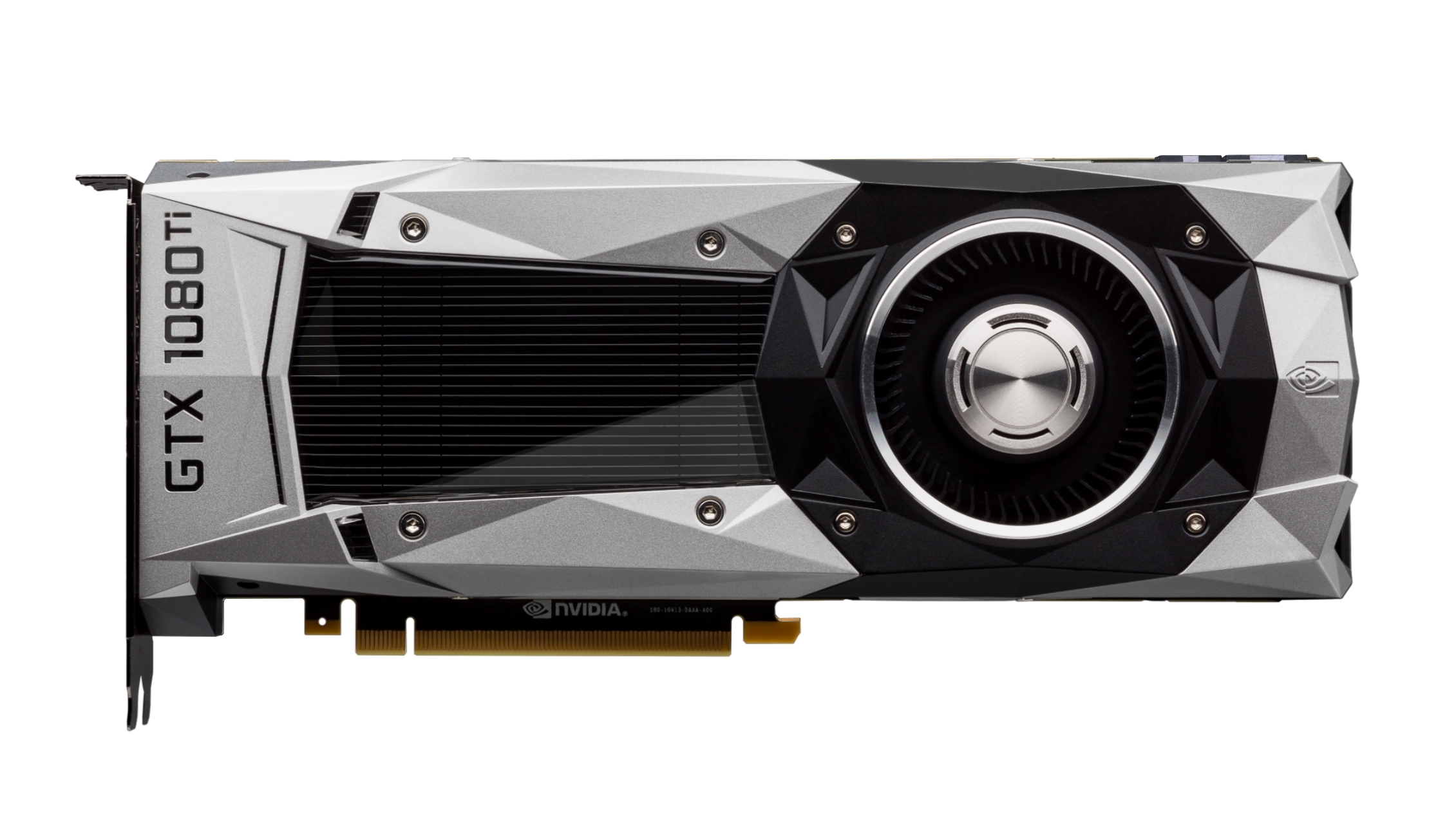
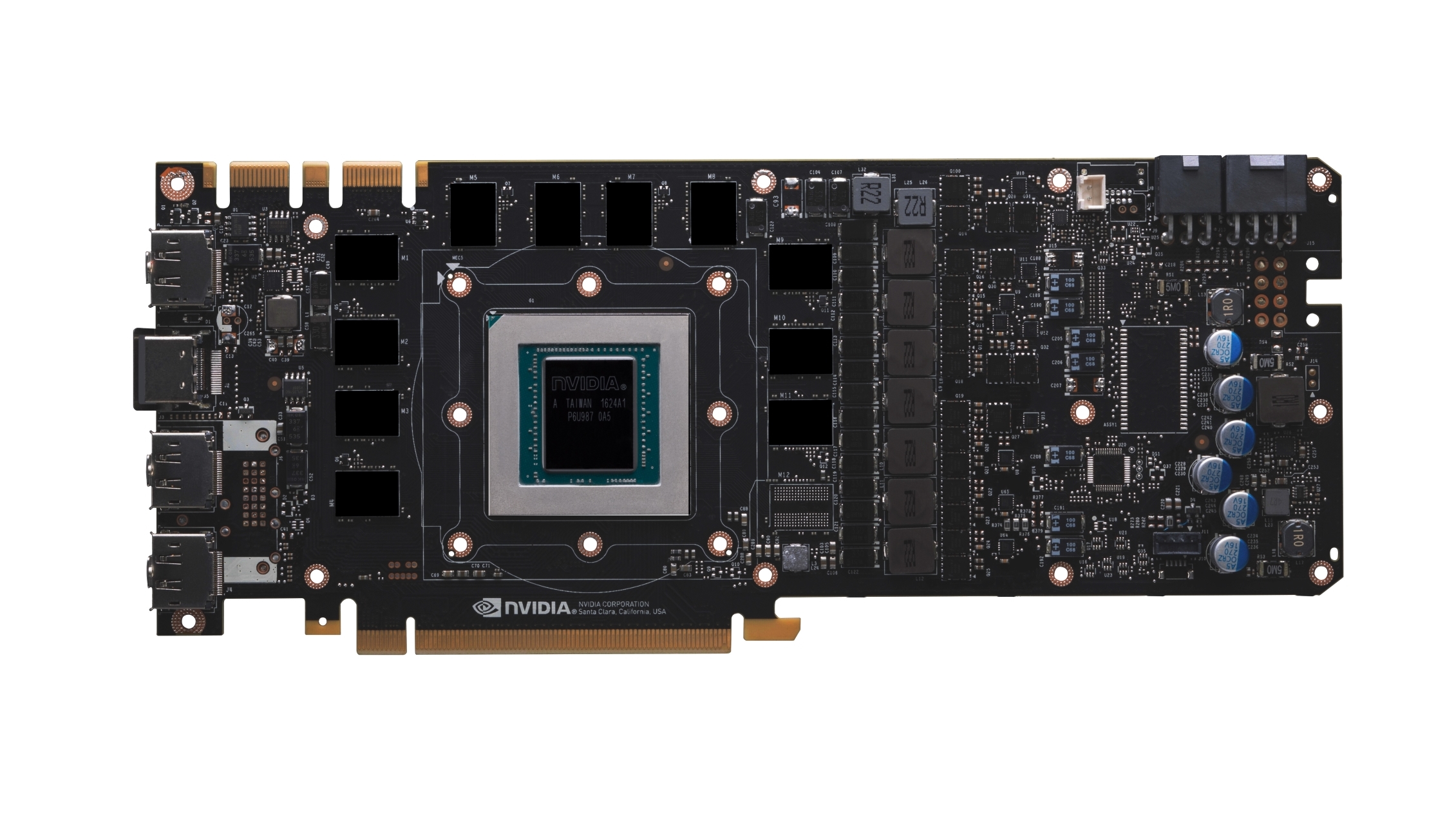
Nvidia GTX 1080 Ti specs
As possibly the final grand hurrah of the Pascal architecture (we’re refusing to count the bizarre GTX 1070 Ti) the GTX 1080 Ti is a very familiar card, made even more so by its striking resemblance to the Titan X. We had originally expected Nvidia to follow its previous Titan>Ti form by chopping a few chunks of logic out of the big chip to squeeze it down into a more price-friendly, consumer-focused form. Not a bit of it…
Nvidia has pretty much just rebadged the original Titan X and nearly halved its price. To that end the GTX 1080 Ti is rocking the same 16nm FinFET GP102 GPU with 12 billion transistors and the same 3,584 CUDA cores inside it.
| GTX 1080 Ti | GTX Titan X | GTX 1080 | |
| GPU | GP102 | GP102 | GP104 |
| Lithography | 16nm FinFET | 16nm FinFET | 16nm FinFET |
| Transistors | 12bn | 12bn | 7.2bn |
| Chip size | 471mm2 | 471mm2 | 314mm2 |
| Boost clock | 1,582MHz | 1,531MHz | 1,733MHz |
| Base clock | 1,480MHz | 1,417MHz | 1,607MHz |
| CUDA cores | 3,584 | 3,584 | 2,560 |
| Memory Capacity | 11GB GDDR5X | 12GB GDDR5X | 8GB GDDR5X |
| Memory bus | 352-bit | 384-bit | 256-bit |
| TDP | 250W | 250W | 180W |
| Launch price | $699 (£699) | $1,200 (£1,179) | $529 (£423) |
Those cores are arrayed across 28 streaming microprocessors (SMs) in six graphics processing clusters. The full core configuration, though, is ever so slightly different from the Titan X. Despite having the same 3,584 cores and 224 texture units, Nvidia has cut the number of render output units (ROPs) to 88, down from 96. It’s also made a slight incision into the cache and removed a small amount of that too – the L2 cache on the Titan X stands at 3,072K, while the GTX 1080 Ti has 2,816K of L2.
Things are most different on the memory side, though the important spec change isn’t actually the drop from 12GB to 11GB of GDDR5X. Working with memory maestro, Micron, Nvidia has dropped the fastest high-capacity graphics memory around onto the GTX 1080 Ti’s PCB. This new iteration of GDDR5X memory has a standard operating frequency of 5,505MHz and an 11Gbps data rate. That means despite actually having less memory, and thus a smaller aggregated memory bus (352-bit instead of the Titan X’s 384-bit), the GTX 1080 Ti comes with a total memory bandwidth of 484GB/s. That may only be 4GB/s faster than the Titan X, but that’s still impressive.
Nvidia has also boosted the cooling and power componentry surrounding the beefy GP102 GPU that forms the beating heart of the GTX 1080 Ti. The new seven-phase dual-FET design spreads the power load more than the Titan X and allows for less power leakage (realised in GPU terms as heat) and a cleaner supply of juice. This is partly how Nvidia has been able to ship the standard GTX 1080 Ti cards with a higher out-of-the-box boost clock than the Titan X.
The Founders Edition cooler features a new vapour chamber and an overall design which Nvidia claims offers twice the airflow area the GTX 1080’s Founders Edition has. The extra exhaust area needed to boost the airflow does mean there’s no DVI connection on the card’s I/O plate, though.
Nvidia does supply a DisplayPort to DVI adapter however, for those who can’t give up their old-school monitors. I’ve still got a lovely 30-inch IPS Dell screen that needs a DVI connection so I can totally sympathise…
Interestingly, though, despite the extra power and cooling engineering efforts, the thermal threshold of the chip has actually been lowered from its Titan X days. The Titan X will only start throttling its chip when the silicon tops 94°C, while the GTX 1080 Ti will start reining in its GPU at 91°C.
Nvidia GTX 1080 Ti benchmarks
PCGamesN Test Rig: Intel Core i7 8700K, Asus ROG Strix Z370-F Gaming, 16GB Crucial Ballistix DDR4, Corsair HX1200i,
Philips BDM3275
Nvidia GTX 1080 Ti performance
So there it is, in orange and blue: the GTX 1080 Ti is faster in-game than Pascal’s Titan X. It’s only ever by a couple of frames per second on average at most, but the fact there is a performance delta leaning towards the newer, cheaper card at all is deeply impressive.
It ought to go without saying, then, that means it also gives the GTX 1080 a powerful shoeing in the gaming performance stakes too. Nvidia has been calling this the best Ti card it’s ever produced for the fact it estimates a 35% performance boost over the GTX 1080 with the new GTX 1080 Ti, but in our testing that’s looking like a rather conservative statement.
At times, especially at 4K, we’ve been seeing performance well over 50% higher using the GTX 1080 Ti. The price difference between the two cards then does genuinely offer a serious frame rate upgrade for the money, giving a clear delineation between Nvidia’s top two consumer-focused GPUs. If you’re sticking with a 1440p monitor the GTX 1080 will see you right, but if your focus is fixed firmly on 4K screens – or above – then the GTX 1080 Ti is the only card you need to consider right now.
While there isn’t much of a difference in the gaming performance of the GTX 1080 Ti and the Titan X, there does seem to be in the overall power draw. We measured the maximum platform power draw from the wall during intensive 3D testing and the GTX 1080 Ti seemed a good bit more thirsty than the Titan X. Given the higher GPU clockspeeds and the increased memory frequency though that’s probably not surprising. When you’ve got a chip as big and complex as the GP102 GPU the power draw increases dramatically as you push it harder and harder.
That’s evident in our overclocking testing too. At our peak GPU and memory frequencies both the GTX 1080 Ti and Titan X push well over the 400W peak. Sadly, though, I was unable to get either GP102 chips above the 2GHz overclocking mark Jen-Hsun Huang had been showing off on stage at the GDC unveiling of the GTX 1080 Ti.
Still, hitting a GPU offset of +150MHz and +190MHz for the Ti and Titan X respectively isn’t bad and meant both cards were generally (because of frequency/power variance) running at around 1,911MHz in-game.
On the memory side, the GTX 1080 Ti’s newly-minted Micron GDDR5X memory is capable of being pushed a lot further than that of the Titan X. I was still able to coax the older card’s memory up above the 11Gbps mark, but on the Ti I almost hit 12Gbps. Despite that, with both cards running at their maximum overclock, the Titan X actually maintained the very slightest performance lead over the GTX 1080 Ti.
This is where the GTX 1080 Ti’s new cooler comes into play, though. The Titan X gets incredibly blowy once you start cranking up the clocks, while the GTX 1080 Ti is noticeably quieter. It’s definitely not actuallyquiet though, when you get above 50% fan speed you will certainly know about it. We’ll be looking to the board partners and their bespoke cooling arrays to change that.
Nvidia GTX 1080 Ti verdict
For all the little details of this review, the cache, GPU, and memory differences, all you need to know is Nvidia has created a graphics card with all the power of its flagship Titan X for almost half the price. So yeah, for all your 4K needs look no further. Shouldn’t have really bothered writing all that other stuff, should I? This could’ve just been a 140 character Twitter review…
There is still the fact that, while in comparison with the $1,200 Titan X the GTX 1080 Ti looks like a bargain, we’re still talking about a consumer-focused graphics card that costs $870(£669). That’s a huge amount of money, and just because the professional-level Titan X has been priced at that point it doesn’t mean we ought to accept that high-end graphics cards aimed at the consumer market should cost the best part of a grand.
Kudos to Nvidia though for finally giving up on the Pascal generation’s reference card/Founders Edition pricing shenanigans. But we’re still going to see some seriously expensive GTX 1080 Ti cards in the coming months.
The straight GTX 1080’s price drop, however, makes that a far more tempting GPU for anyone not yet looking to make the move to 4K. At 1440p and 1080p the GTX 1080 is more than enough GPU for even the most discerning of gamers. Even at 4K it manages some pretty healthy frame rates, especially if you’re smart with your graphics and post-processing settings.
But what of the Titan X? The GTX 1080 Ti is like a giant silicon middle-finger to anyone who dropped the cash on a Titan X, but also leaves the suddenly irrelevant card dead in the water. There’s simply no point, no benefit, to picking the Titan X over the Ti. And that’s a first; the Ti cards have always been mighty close to their Titan compatriots, but have generally maintained a slight lead, even if just in their extended frame buffer.
Which is why Nvidia subsequently released the Titan Xp a short while after the GTX 1080 Ti launch fuss had died down. As predicted, it uses the full GP102 core Nvidia fitted out their top Quadro cards with.
For most of us, the GTX 1080 Ti remains the best high-end 4K graphics card around. It’s still priced beyond the reach of normal gamers, but if your wallet is fat and you’re aiming for the highest resolutions in gaming then this is the GPU for you. Hell, you can pick up two of them for only slightly more than you might spend on a brand new Titan Xp.
